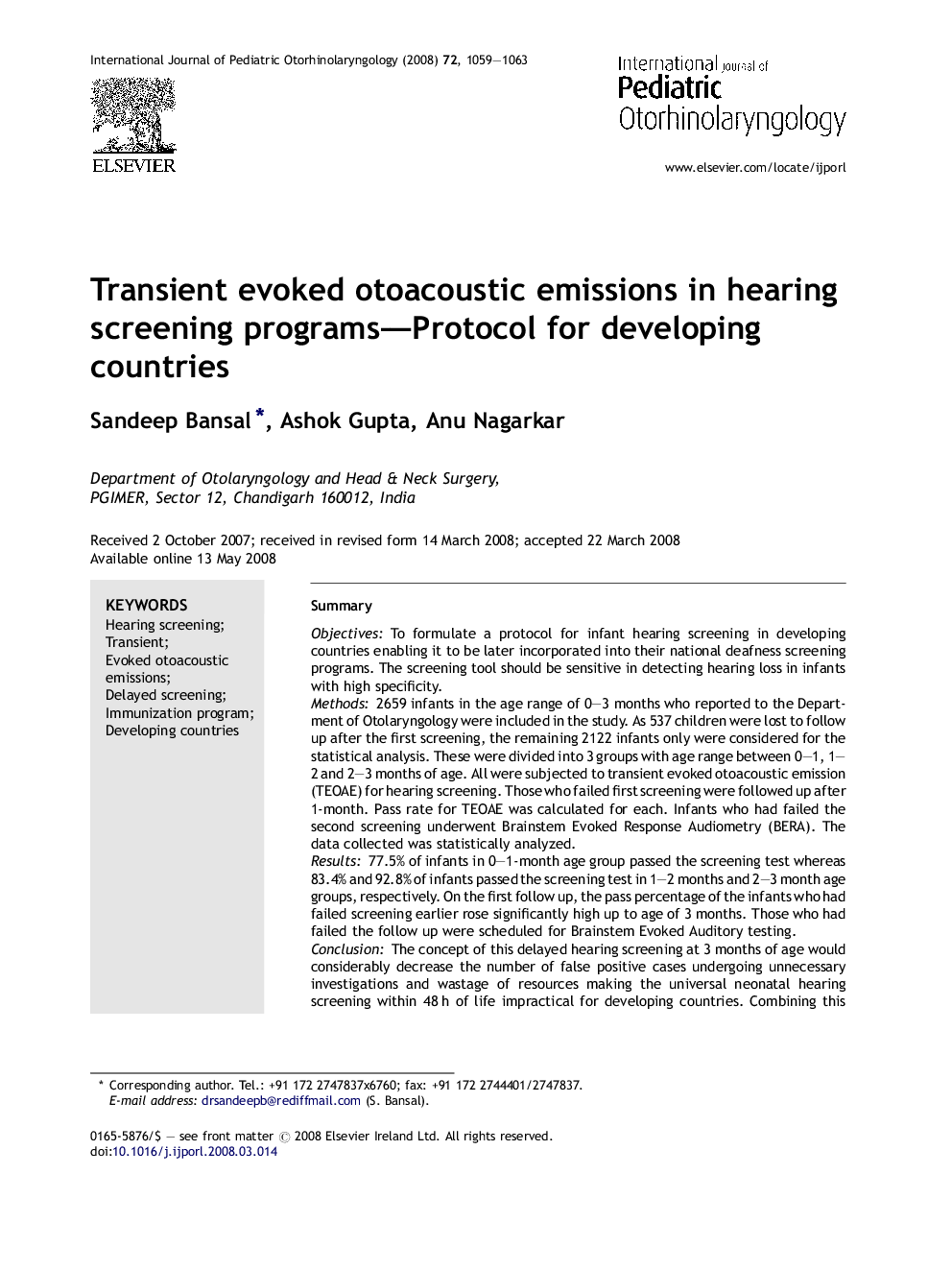| کد مقاله | کد نشریه | سال انتشار | مقاله انگلیسی | نسخه تمام متن |
|---|---|---|---|---|
| 4115041 | 1606081 | 2008 | 5 صفحه PDF | دانلود رایگان |

SummaryObjectivesTo formulate a protocol for infant hearing screening in developing countries enabling it to be later incorporated into their national deafness screening programs. The screening tool should be sensitive in detecting hearing loss in infants with high specificity.Methods2659 infants in the age range of 0–3 months who reported to the Department of Otolaryngology were included in the study. As 537 children were lost to follow up after the first screening, the remaining 2122 infants only were considered for the statistical analysis. These were divided into 3 groups with age range between 0–1, 1–2 and 2–3 months of age. All were subjected to transient evoked otoacoustic emission (TEOAE) for hearing screening. Those who failed first screening were followed up after 1-month. Pass rate for TEOAE was calculated for each. Infants who had failed the second screening underwent Brainstem Evoked Response Audiometry (BERA). The data collected was statistically analyzed.Results77.5% of infants in 0–1-month age group passed the screening test whereas 83.4% and 92.8% of infants passed the screening test in 1–2 months and 2–3 month age groups, respectively. On the first follow up, the pass percentage of the infants who had failed screening earlier rose significantly high up to age of 3 months. Those who had failed the follow up were scheduled for Brainstem Evoked Auditory testing.ConclusionThe concept of this delayed hearing screening at 3 months of age would considerably decrease the number of false positive cases undergoing unnecessary investigations and wastage of resources making the universal neonatal hearing screening within 48 h of life impractical for developing countries. Combining this delayed hearing screening with the 3rd dose of universal immunization program would constitute a viable, feasible and universal hearing screening program, which can be drafted into national deafness programs of the developing countries.
Journal: International Journal of Pediatric Otorhinolaryngology - Volume 72, Issue 7, July 2008, Pages 1059–1063